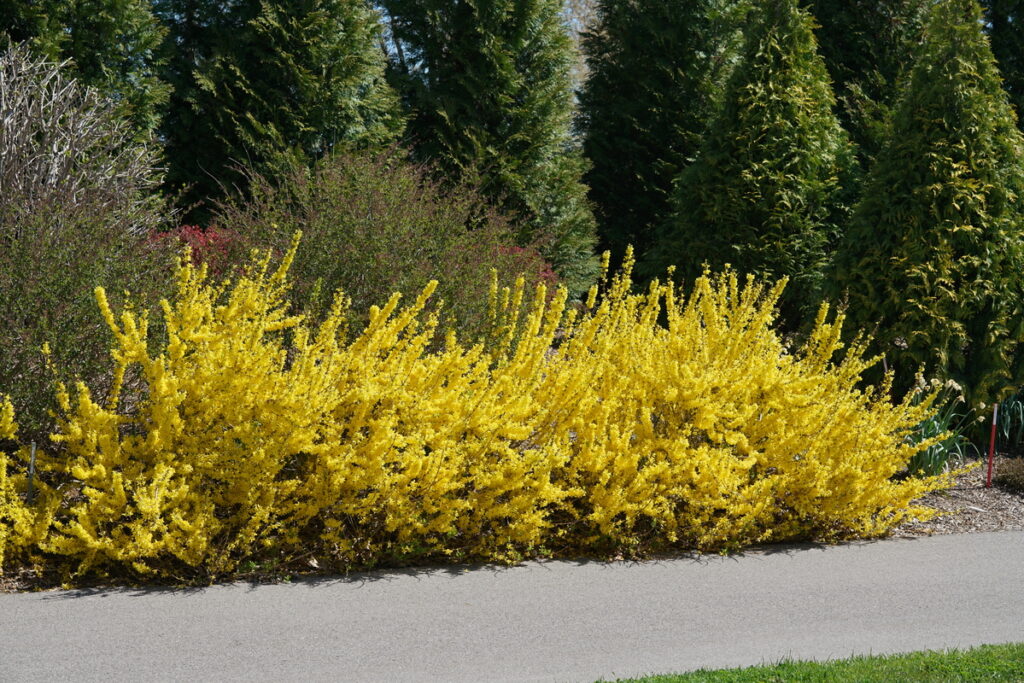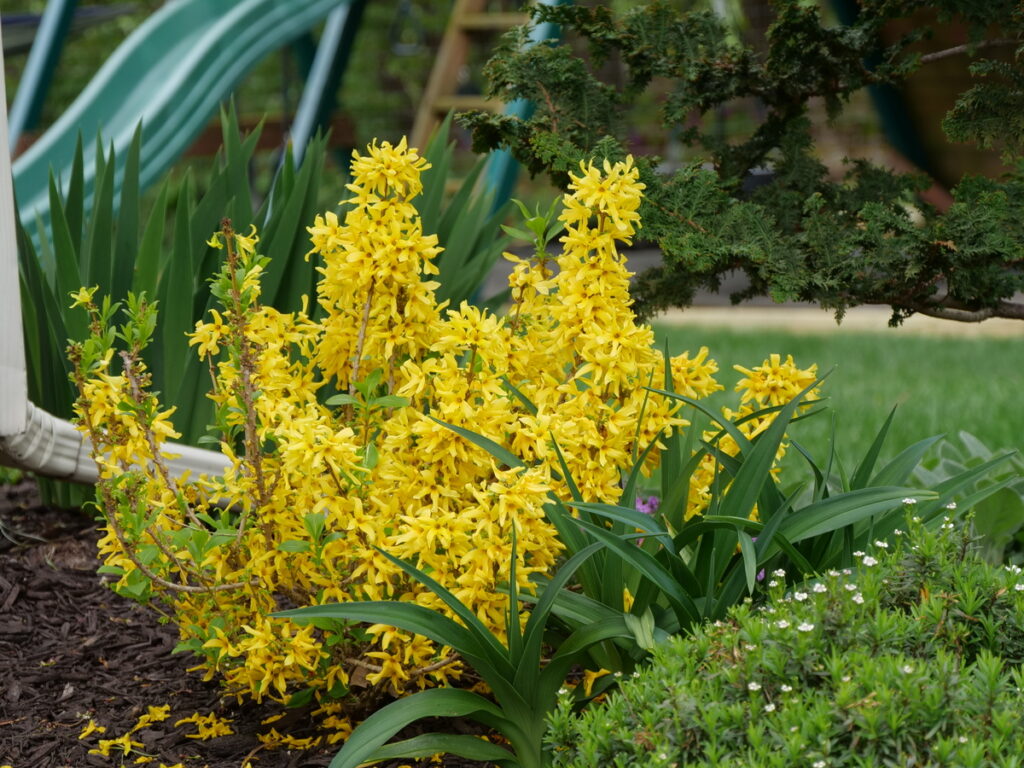The New Forsythias
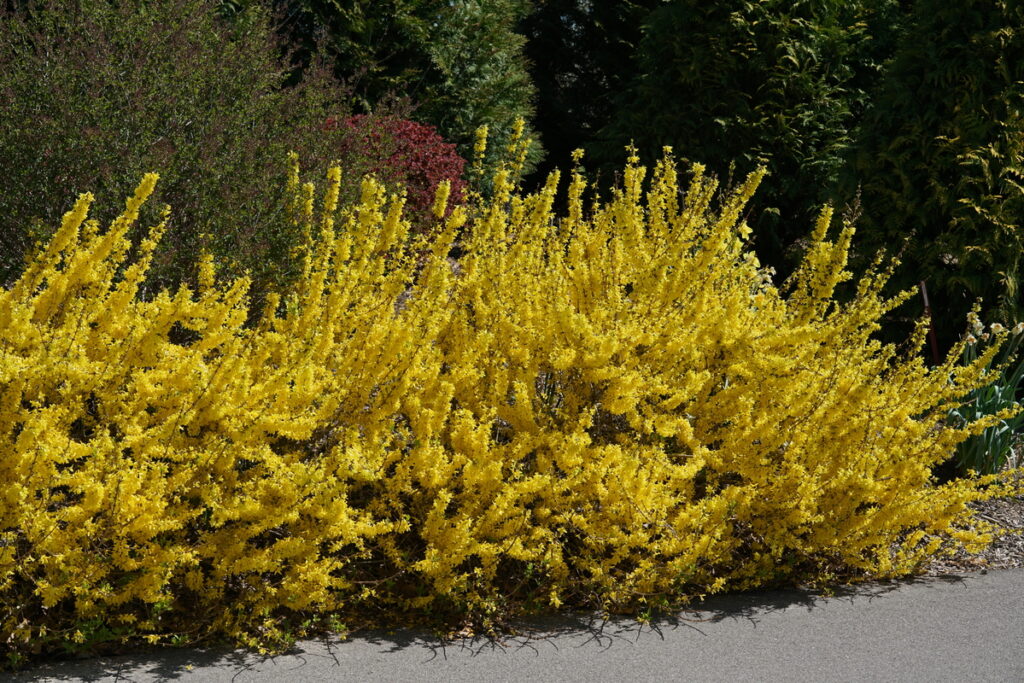
My dog-eared copy of Dr. Hessayon's book Trees & Shrubs (1983 edition) states that "Gardens are brightened each March and April by the masses of yellow flowers on the leafless branches [of forsythia]." It then goes on to warn of its two enemies; birds who eat the buds and gardeners who hack the shrub to the ground to keep it in check – both resulting in few flowers. The only compact variety at that time comes with a warning that it will bear few flowers and fails to mention that after flowering the multi-cane shrub itself is an ungainly mess with non-noteworthy leaves.
It won't surprise you therefore, that this spring-flowering shrub has never been high on my wish list. Thankfully, things change and almost 40 years later Proven Winners have some excellent options besides the original 8 foot tall rambling monster. Their Show Off series offers three useful sizes from 6 feet tall to knee-high. Intrigued? So was I.
Show Off
Show Off – is the largest in the collection at 5-6 ft. tall and wide, yet still more manageable than older varieties. This is one to brighten up those distant borders, perhaps under limbed-up deciduous trees as shown in the photo above. It would also make a stunning spring specimen in any large mixed border.
Show Off Starlet
Show Off Starlet is the mid-sized option at 2-3 ft. tall and wide, suitable for the front of larger borders as depicted above or as part of a multi-season tapestry within a larger bed.
Show Off Sugar Baby
Show Off Sugar Baby is perfect for smaller gardens where space is at a premium as it comes in at just 1.5-3 ft. tall and wide, ideal for edging a patio or border in spring.
Conditions for Success
- Part sun-full sun
- Hardy in USDA zones 5-8
- If your MUST prune, do so immediately after flowering (they bloom on the previous years growth)
- Average water
- Average soil
Bonus
- Deer-resistant
- They really don't need to be pruned if you choose the right size for your space
- Easy-care
Design Ideas
The main design consideration should be what will happen when flowering is over? You're left with a multi-cane shrub with mid-sized, mid-green leaves so let's make sure its companions are colorful in summer, fall and/or winter, focusing primarily on foliage color rather than short term flowers. Avoid, for example, planting forsythia next to spring blooming mock orange (Philadelphus spp.) or lilac (Syringa spp.) which are also cane shrubs with mid-green, mid-sized leaves.
High contrast companions
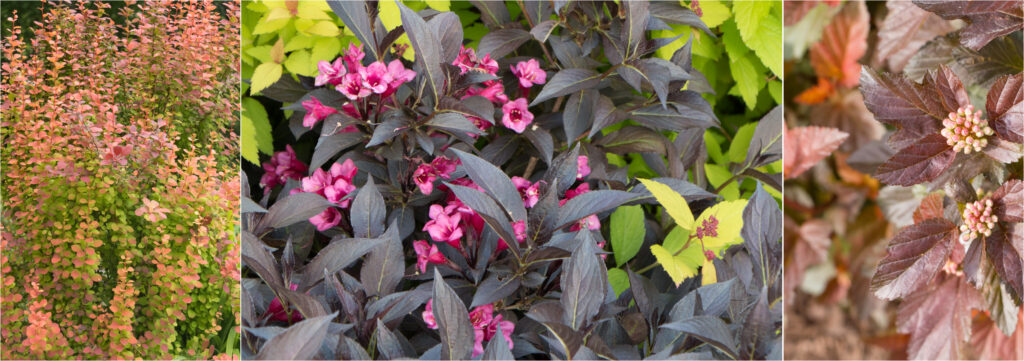
Left to right: Orange Rocket barberry, Midnight Wine weigela, Ginger Wine ninebark. Photo credit: Le jardinet
Think of foliage in shades ranging from scarlet-orange to rich chocolate and you'll immediately have options such as weigela, barberry and ninebark all of which thrive in the same growing conditions as forsythia. All three shrubs also come in a wide range of sizes so for example, you could choose to have Show Off forsythia behind the shorter Little Devil ninebark or Spilled Wine weigela. Or if you like the idea of the Show Off Sugar Baby forsythia at the front of your border, try Tangelo barberry behind – the early orange-red foliage color would be especially dramatic. Ginger Wine ninebark or the tall Wine and Roses weigela would also work well as a backdrop and the ninebark has excellent fall color too. (Note: barberry is invasive in some states. Check with your local extension office before planting).
Low contrast companions
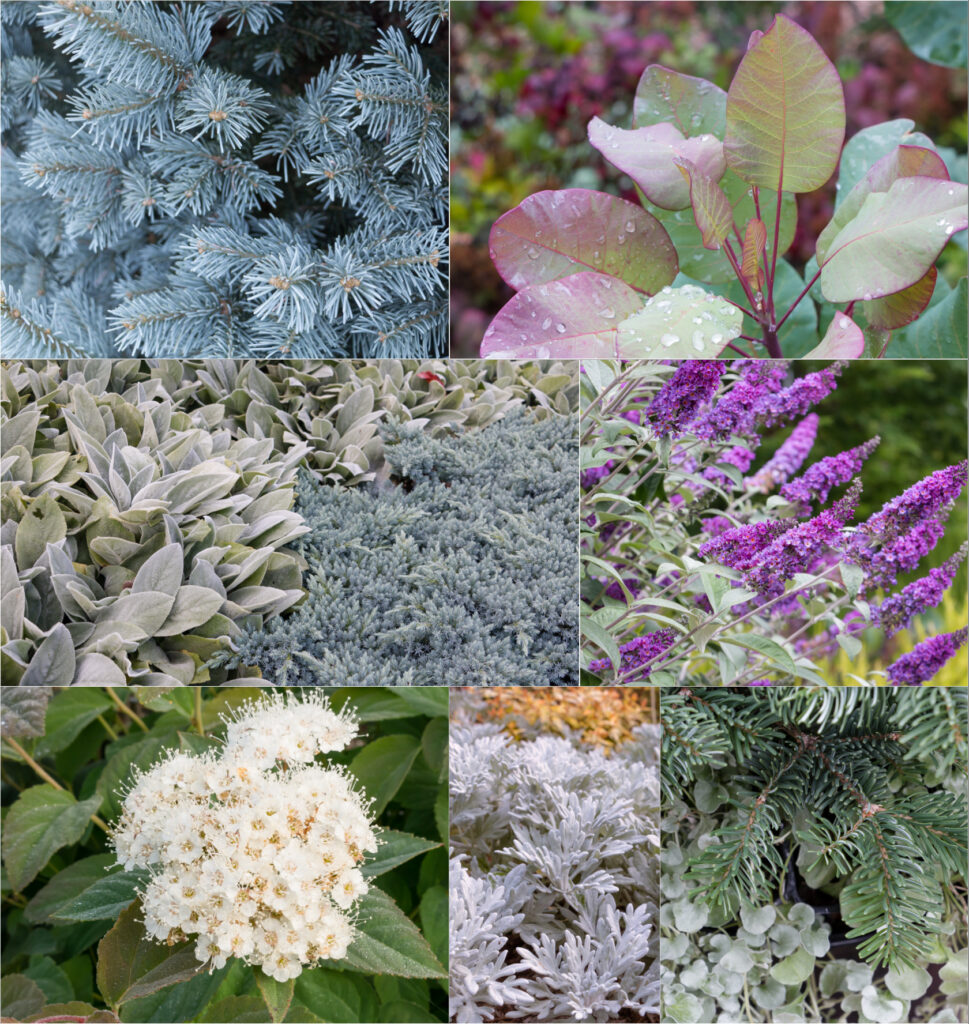
Top left, clockwise: dwarf Arizona corkbark fir, Old Fashioned smoke bush, Blue Chip butterfly bush, Spreading Star Pacific fir underplanted with Silver Falls dichondra (an annual for me), Silver Bullet wormwood (an annual variety), Blue Kazoo spirea, Helene von Stein lambs ears with Blue Star juniper. Photo credit: Le jardinet
If you prefer something less vibrant you should seek out foliage in shades of silver, blue or dark green.
Conifers would be an excellent way to introduce year-round interest to the area since they are evergreen. Blue Star juniper (Juniperus squamata 'Blue Star') is a personal favorite and would look charming in front of Show Off, or adjacent to either of the shorter forsythias. Add a few well-placed boulders and you have the perfect vignette. Another low-growing, blue-green conifer I like is the Spreading Star Pacific fir (Abies amabilis 'Spreading Star') with its striking white stomata on the undersides of the needles. If you prefer to add conifers as a backdrop the silver-blue dwarf Arizona corkbark fir (Abies lasiocarpa 'Glauca Compacta') eventually reaches 10-15 feet tall and 6-10' wide but is slow growing. (Note that the mature size is rarely stated. Typically a 10 year height of 6 feet x 3 feet wide is often quoted. It doesn't stop growing after 10 years and will likely be at least 5 or 6 when you buy it). The white fir (Abies concolor) is a stunning icy-blue fir that needs excellent drainage but will reach 30 feet tall in ideal conditions.
For deciduous shrub companions in sunny locations, many butterfly bushes have silver foliage and come in a wide range of sizes (be sure to select a sterile variety if you live in an area where these are invasive). Iceberg Alley sageleaf willow is another lovely option with the addition of catkins in spring. Blue Kazoo spirea has beautiful foliage in a blue-green as does Old Fashioned smoke bush. For a shorter option the cushion-shaped Cobalt-n-Gold hypericum has small, silver-green leaves and sunny-yellow summer flowers.
Or for silver-leaved perennials the much loved lambs ears (Stachys byzantina) is an easy choice in full sun or select one of the low growing wormwood (Artemisia spp.) varieties such as Silver Brocade for a felted, silvery groundcover.
Spring ideas
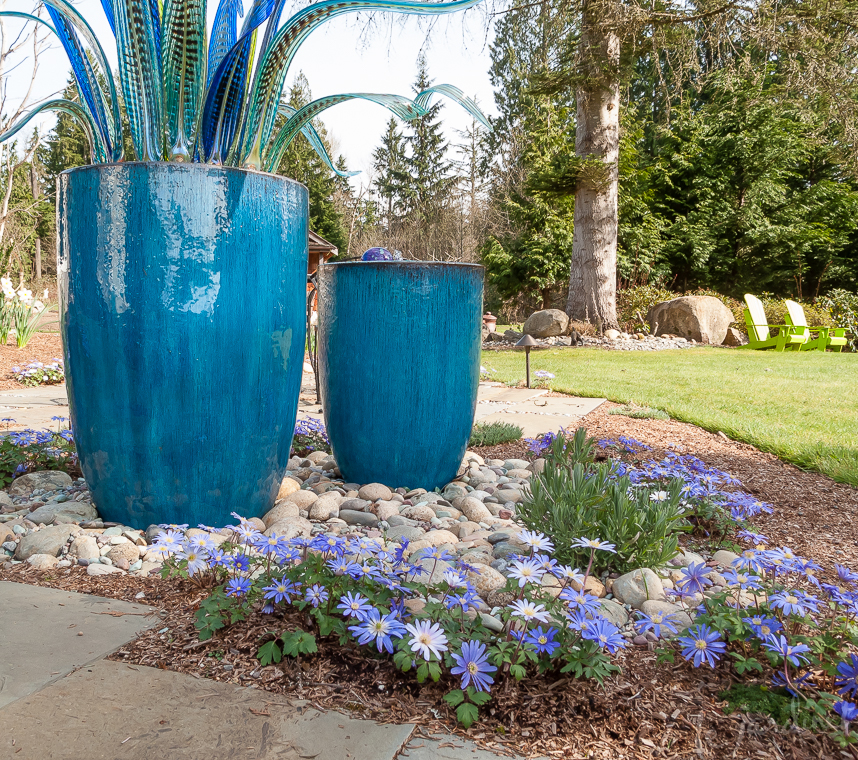
A carpet of blue woodland anemones like this would look delightful surrounding yellow blooming forsythia in spring. Photo credit: Le jardinet
If you'd like to amp-up the spring interest, skip the obvious daffodils since their color may be 'lost' and instead choose tulips in contrasting colors. Or add a carpet of blue woodland anemones (Anemone blanda), blue chionodoxa, purple crocus, or blue grape hyacinth (Muscari spp.) The perennial groundcover Georgia Blue speedwell (Veronica peduncularis 'Georgia Blue') would also be a delightful carpeting choice with its royal blue flowers and darker foliage.
Share your ideas!
Do leave a comment to tell us what combinations you are going to try and let's give these new forsythias a new season in the spring spotlight.
Subscribe to Receive Blog Posts
Gardening inspiration delivered right to your inbox from Le Jardinet

